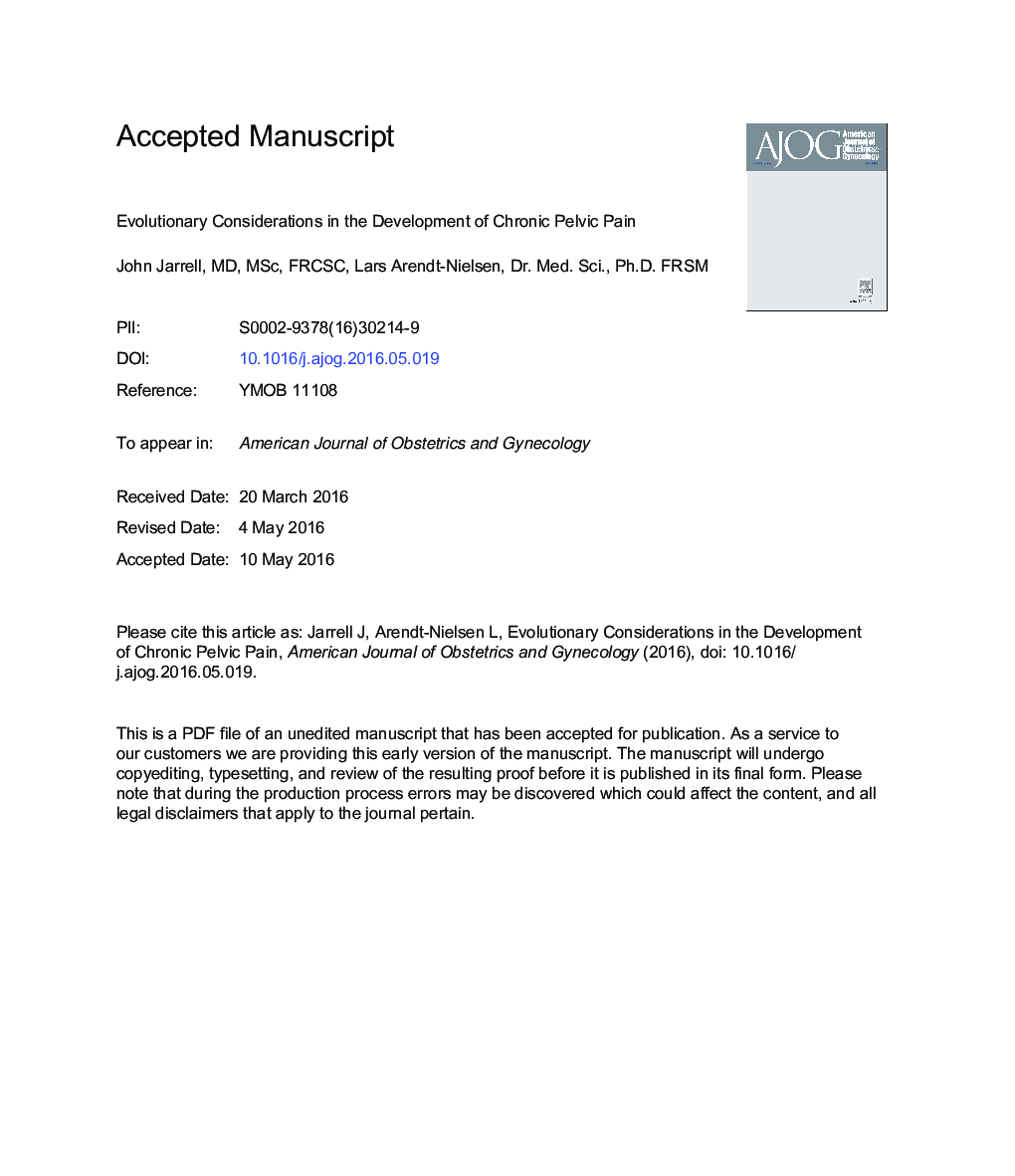| Article ID | Journal | Published Year | Pages | File Type |
|---|---|---|---|---|
| 6143641 | American Journal of Obstetrics and Gynecology | 2016 | 13 Pages |
Abstract
Chronic pelvic pain is common among women of reproductive age and is associated with significant morbidity and comorbidities. In this Viewpoint, we explore the evolutionary cause of pelvic pain and summarize evidence that supports a menstruation-related evolutionary cause of chronic visceral pelvic pain: (1) lifetime menstruation has increased; (2) severe dysmenorrhea is common in the chronic pelvic pain population, particularly among those with pain sensitization; and (3) a potential biological mechanism can be identified. Thus, chronic pelvic pain may arise from the mismatch between the slow pace of biological evolution in our bodies and the relatively rapid pace of cultural changes that have resulted in increased menstrual frequency due to earlier menarche, later mortality, and lower fecundity. One possible mechanism that explains the development of persistent pain from repeated episodes of intermittent pain is hyperalgesic priming, a physiological process defined as a long-lasting latent hyperresponsiveness of nociceptors to inflammatory mediators after an inflammatory or neuropathic insult. The repetitive severely painful menstrual episodes may play such a role. From an evolutionary perspective the relatively rapid increase in lifetime menstruation experience in contemporary society may contribute to a mismatch between lifetime menstruation and the physiological pain processes, leading to a maladaptive state of chronic visceral pelvic pain. Our current physiology does not conform to current human needs.
Related Topics
Health Sciences
Medicine and Dentistry
Medicine and Dentistry (General)
Authors
John MD, MSc, FRCSC, Lars DMSc, PhD, FRSM,
